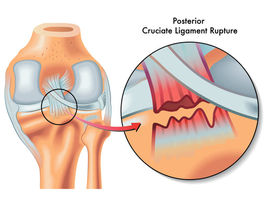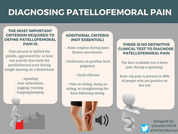KNEE PAIN

The knee comprises a strong joint that is supported by large strong muscles spanning across the ankle, knee and hip. It is also supported by a set of strong ligaments to provide control against strain. This clever design enables the knee to tolerate strain and generate forces needed for activities such as running, jumping/hopping or kicking a ball across the field.

Knee pain is a general term that can relate to any pain around the side, front and back of the knee. Specifically, it may relate to sensitive muscles, bursa, tendons and knee cap / joint.
Common medical diagnostic labels include: patellofemoral pain, Hoffa pad syndrome, pes anserinus, patella tendinopathy, patella instability, quadriceps muscle strain, iliotibial band syndrome, knee osteoarthritis. It may also be related to damage structures from a traumatic injury. Some examples include ligaments tear (anterior/posterior cruciate, medial / lateral collateral), loose osseous body from avulsion or fracture, hamstring strain or tear and Baker’s cyst. Occasionally, it may also be a referred pain down the leg that can be associated with back or hip pain.

Our knee’s health depends on regular movements, lower limb muscle strength (hip, thigh and lower leg), and caring for general physical and psychological health. More specifically; this includes participating in physical activity regularly, keeping a healthy weight, good sleep habits and managing stress and mood well (level 1 evidence).
Physiotherapists are key healthcare providers for conservative knee care, being tasked to prevent persistent pain and disability, and facilitating a pathway to wellness and functional restoration.
%20OnPoint%20Enlarged.png)





![A medial collateral ligament (MCL) injury is a stretch, partial tear, or complete tear of the ligament on the inside of the knee. It is one of the most common knee injuries and results mostly from a valgus force on the knee
As with all the ligament injuries, the MCL injury is graded I, II or III (this grade is given depending on the degree of sustained tear). A grade I tear consists of less than 10% of the collagen fibres being torn, with some tenderness but no instability. Most of the patients feel pain when we apply force on the outside of a slightly bent knee, but there are no other symptoms.[5]
Grade II tears vary in symptoms and therefore they are broken down further to grades II- (closer to grade I) and II+ closer to grade III, but both of them count as having tenderness but no instability.[5] The pain and swelling are more significant than with grade I injuries. When the knee is stressed (as for grade I), patients complain about pain and significant tenderness on the inside of the knee, moderate laxity in the joint is observed.
Obviously, this means that a grade III tear is a complete rupture of the MCL, resulting in instability. Patients have significant pain and swelling over the MCL. Most of the time they have difficulty bending the knee. As stated before a grade III tear results in instability, when the knee is stressed (as described above) there is joint laxity. Grade III MCL injuries have an extra scale to measure the extent of the instability. These are described from the amount of joint separation in the 30° valgus test, more information here
Grade I and II injuries have well-defined endpoints contrary to a grade III tear that occurs a soft endpoint with valgus stress testing.[7]
A grade I tear consists of less than 10% of the collagen fibers being torn. Grade II tears vary in symptoms and therefore they are broken down further to grades II- (closer to grade I) and II+ (closer to grade III). Obviously, this means that a grade III tear is a complete rupture of the MCL.
When the knee is stressed (as for grade I), patients complain about pain, moderate laxity in the joint and a significant tenderness on the inside of the knee.
When we speak of a grade III tear of the MCL. patients have significant pain and swelling over the MCL. Most of the time they have difficulty bending the knee. Another common finding of a grade III tear is instability. When we stress the knee (as described above) there is joint laxity.](https://static.wixstatic.com/media/93313e_92276139d6c448438830e938e4b6e22a~mv2.jpg/v1/fit/w_281,h_221,q_75,enc_avif,quality_auto/93313e_92276139d6c448438830e938e4b6e22a~mv2.jpg)








![Iliotibial band syndrome (ITBS) is a common knee injury that usually presents with pain and/or tenderness on palpation of the lateral aspect of the knee, superior to the joint line and inferior to the lateral femoral epicondyle.[1]. It is considered a non-traumatic overuse injury, often seen in runners, and is often concomitant with underlying weakness of hip abductor muscles.[2] [3]. The current theory is that this condition is likely to be caused by compression of the innervated local adipose tissue[4]. Studies have described an ‘impingement zone’ occurring at, or slightly below, 30° of knee flexion during foot strike and the early stance phase of running. During this impingement period in the running cycle, eccentric contraction of the tensor fascia latae muscle and of the gluteus maximus causes the leg to decelerate, generating tension (compression) in the iliotibial band.[5]](https://static.wixstatic.com/media/93313e_f03d313b0f404ac096dba3be5f3016b2~mv2.jpg/v1/fit/w_278,h_225,q_75,enc_avif,quality_auto/93313e_f03d313b0f404ac096dba3be5f3016b2~mv2.jpg)




























